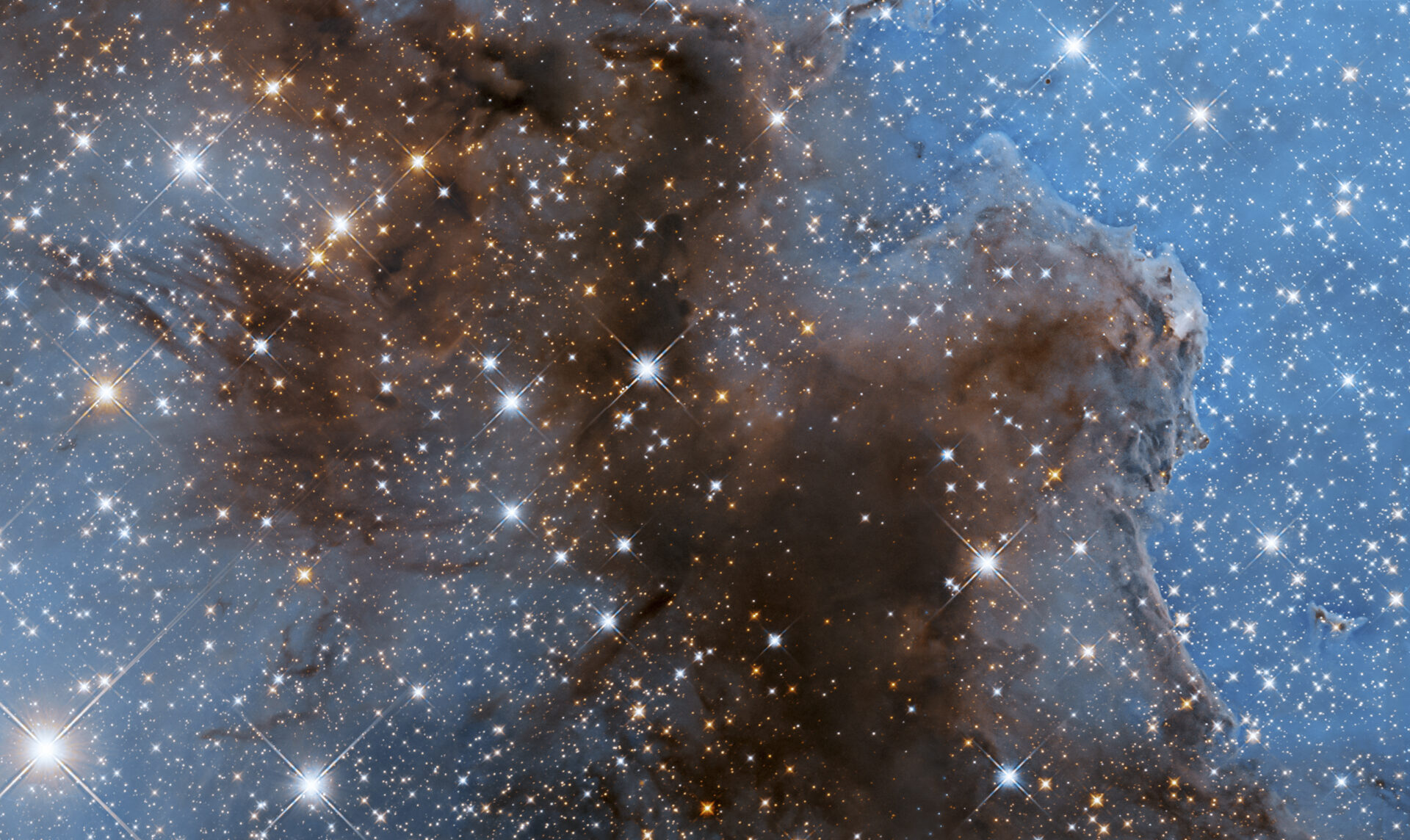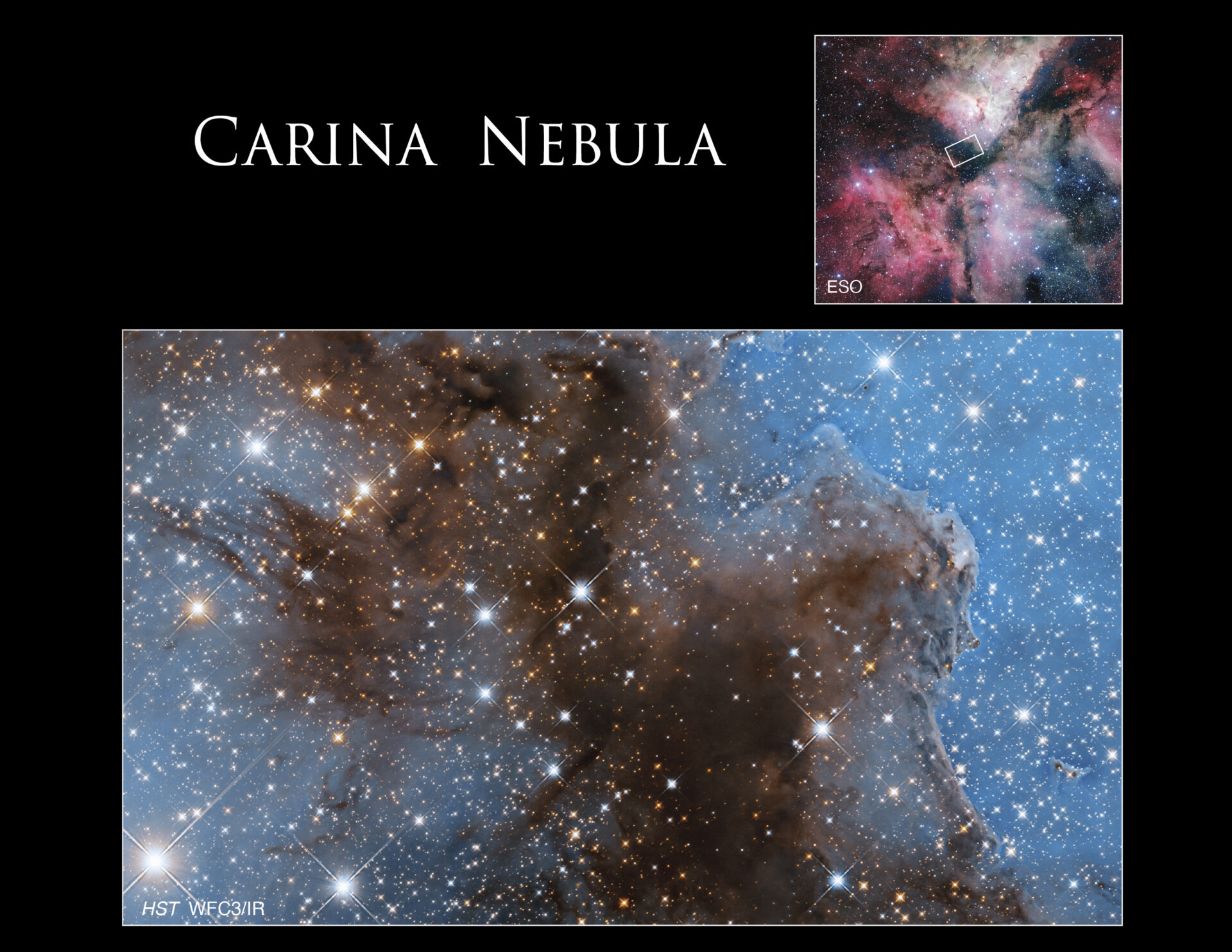The Carina Nebula is a supermodel among the cosmic objects of the Universe. Earlier we saw photos of this object provided by the VLT Observatory and the James Webb Space Telescope. The other day Hubble took a fresh look at this cosmic beauty.

The brilliant image was published by NASA this week. The Carina Nebula, officially known as NGC 3372, is an emission nebula, a shining mass of gas and dust where stars are actively being born. This is one of the most famous objects, the stars of which give it the appearance of a ghost. The Carina Nebula is located approximately 6,500 to 10,000 light-years from Earth. η Carinae and HD 93129A, the two most massive and brightest stars in our Galaxy, are also located within the region of this nebula.
“When stars form and produce ultraviolet radiation, their winds disperse gas and dust around them, forming dark, dusty areas and sometimes creating empty spots where stars are seen more clearly,” NASA said in a statement.
The Carina Nebula is huge. It occupies 300 light-years of space. The new Hubble image allows us to examine in detail only a small part of this nebula — the multitude of bright stars in this area is even breathtaking. NASA shared a photo showing a large close-up structure in one of the central regions of NGC 3372. Its full size can be estimated in the picture below.

Hubble has spent more than three decades exploring the Universe. The fact that it continues to create such images testifies to the constant improvement of equipment that prolongs the life of the space telescope. Perhaps further we will get more impressive images from other parts of the cosmos.
Earlier we reported on two views of the Hubble telescope on one star cluster.
Follow us on Twitter to get the most interesting space news in time
https://twitter.com/ust_magazine

